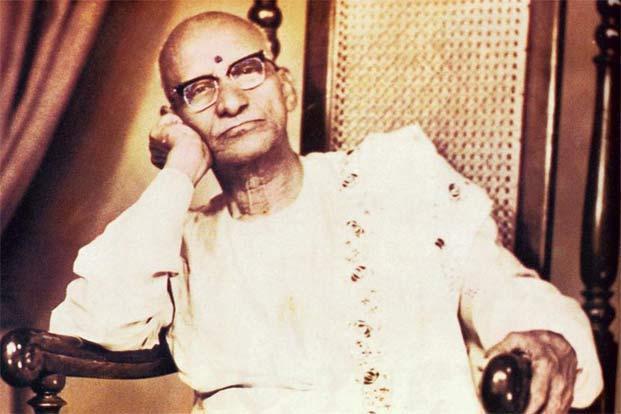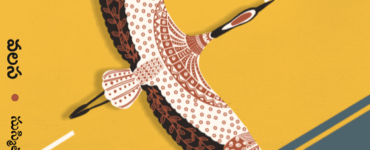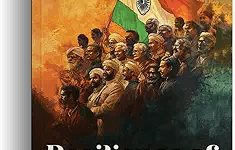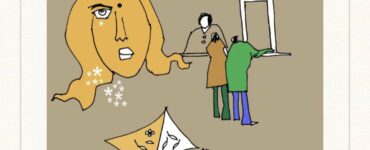Veyi Padagalu, Viswanatha Satyanarayana’s mega novel, was first published in 1935 and was awarded Andhra University’s annual literary prize, along with Sri Adivi Bapiraju’s Narayana Rao. He was also later given the title Kalaprapoorna by the University. The books have seen many reprints afterwards and this translation is from 1976 edition. It was translated into Hindi by Sri P.V Narasimha Rao, the former Prime Minister of India as Sahasraphan.
This novel is a complex and controversial novel in more ways than one. It is variously described as the last agonizing call of a dying civilization; a commentary on Indian idea of dharma in relation to religion, rituals, caste equations, man-woman relationships and cultural practices; It defines the relationships that once enriched the lives of people- between man and God, man and man, man and soil, and man and woman. The story was set in pre-independence India. It can be the story of any village in Andhra Pradesh of yesteryears though the author calls it Subbannapeta. It is said it closely resembles his own village Nandamuru in Krishna District of Andhra Pradesh.
The author looks at dharma as a cosmic snake who, with all its thousand hoods spread across the sky, shields and protects the world. As dharma declines the hoods too decline and the snake that protected dharma with all its thousand hoods gradually disappears. As the old order changes, the new replaces it. It is both a historic necessity and a social imperative for any social order to take birth, rise to its peak and decline and this novel illustrates it in an unmistakable way, asserting that it does not die a silent death but protests loudly before going down. The snake appears to various people in various ways. To the king with all its thousand hoods spread wide as he is the protector of dharma and the representative of the ruling class. To the village head the snake is four headed one. To a couple the cosmic snake appears with two heads as they represent the institution of marriage and to Pasirika, the odd child of Rameswara Sastry he is a one headed snake as Pasirika embodies the greenness of the fields, a friend and a benefactor of the soil. Finally he dies of a snake bite when he violates their code of conduct, signifying the end of greenness after industrial revolution. The village is what the author chooses as the main character in this novel. It is a structure with four pillars – the zamindar, the temples, the devadasi and theg ganachari, who is the mediator between man and God. Dharma Rao, the protagonist is the spectator, an interpreter and a staunch advocate of this eternal dharma, otherwise known as Sanatana dharma. One can see traces of the author in his character. While some good things do happen, this novel depicts the corruption of the core culture. In the end, he sees that the sole aspect that survives the test of time, even after briefly fading for a while, is the institution of marriage. He asserts his belief in this one aspect and that the strength of this institution alone would remain as the backbone of Indian sensibility and culture. The dimensions of caste system also change, but would never disappear. We are witness to this even today. Caste plays an significant role in our political and social fabric while caste-based vote banks play a key role in our so-called democratic processes..
This novel can be examined broadly on two significant parameters. There are aspects which are of universal relevance. The author’s utopian idea of dharma, which is known as Sanatana Dharma, is first significant link that helps the reader to appreciate and critically understand this novel. What then is this Sanatana Dharma? In Indian aesthetics, as well as philosophical thinking, it is interpreted variously in a rich and multi-faceted manner by many modern thinkers. Dharma is regarded as righteous living – one’s chosen way of life based on the tenets of his profession, station in life (jati) and swabhava (individual nature). It is not to be confused with religion. A.K Ramanujam explains it thus: “Sanathana Dharma refers to the core value in this dharma, which is constant and perpetual, which never dies and should never die. In a sense it is also wrong to view it as ancient dharma or something that prevailed in Vedic or pre-Vedic times.” It is, for Viswanatha, the essence of Indian spirit which is eternal and constant. Has it ever existed? On Indian soil it is a question one cannot find an easy answer to as this concept appears in innumerable texts, literary as well philosophic discourses. In this novel it is a very critical aspect of the author’s imagination. It thrives, and the story revolves round this universal philosophy. It is the cosmic snake that rules, protects, directs, blesses, admonishes and surrounds the lives and beliefs of the people of the village.
Zamindar is the representative of this Dharma in the village. When the kings, starting with Verama Naidu to Krishnama Naidu, followed the path of justice, righteousness and generosity, helped the people, promoted desi and margi traditions in arts and literature, built temples to the great gods Nageswara, Subramanyeswara, and Venugopala, the village thrived and people lead contented lives. Krishnama Naidu’s son Ranga Rao comes under the influence of Western culture, never organizes or participates in temple festivals, shows disregard to the practices of the fort, causes the death of a royal elephant by his ignorance and indifference during the time of his coronation, and neglects the respect and affection shown to him by his wife and mother, dismissing them as superstitious women. He then dreams of a snake biting him at thousand places and admonishing him. His son Harappa Naidu tries to revive the past glory but the author’s unmistakable message is that it is not possible to take the clock back. He lives for a short period of time, fulfills certain responsibilities fundamental to his rajdharma. He performs the last rites for his mother and grandmother He becomes eligible to perform the kalyanam celebrations of Lord Venugopala which in turn lead to the ultimate release of the Girika last in the line of devadasis. Historically, the zamindari system thrived under a benevolent ruler and died once the British took over.
Devadasi, in this novel, is the last of the village’s rural tradition, maintained as a cultural institution. This is particular to southern states and the writer depicts how the institution dies due to gradual decline and corruption that sets in. At a number of places in the novel, like when he was discussing devadasi with his newly married wife Arundhati Dharma Rao, he explains that she is not a common prostitute. The author makes a clear distinction between Girika, who is devoted to her Lord Venugopala. She is a woman exclusively devoted to her art, and with a single-minded focus, she learns and prepares herself to become the consort of Lord Venugopala from a very early age. It is no longer possible to keep this tradition alive and the author effectively portrays the positive heights the art has achieved under the patronage of the right Guru, her half-brother. But as with everything else in history, this institution also needed to go as these women could no longer survive solely on their art. It goes down in a spectacular and splendid manner, as her devotion culminates in her art, ennobling her being, and being placed directly in opposition to the supposed stigma of her caste.
The representative of God in the novel is Ganachari. The novel opens with an open challenge thrown by a youth in the village regarding her supernatural powers. The fact that she is a Ganachari, is itself a belief rarely seen and understood in today’s India. The kapu whose cow feeds the snake, pledges that his daughter would be dedicated to service of the Lord and she being the only child to her father becomes an interpreter of the Lord, a Ganachari. Successive men in the kapu’s family were blessed with only a single girl child for generations and the current one is again the last Ganachari. Next generation did not have any girl children. And with her, again, as the novel evolves, the nature of the Ganachari changes. She leaves her home protesting against the onslaught of modern civilization and while she starts living in the temple she refuses to eat the food prepared by her brother’s wife and Dharma Rao arranges food that is prepared by his wife to be sent to her. Her hair gets tangled, people lose faith in her powers and she dies in a village fire. With her, the Ganachari as a belief also comes to an end.
Pasirika is the son born to Manga Rameswara Sastry’s fourth wife, who is from a lower caste. When he was born, the village perceives him as a freak, green in colour and thin like a stick, he used to crawl into the fields and the backyard of his house to eat grass. He is the symbol of the agricultural abundance of India. When the cultivatable fields get reduced and are taken over by dry lands, Pasirika’s survival becomes difficult. He is a symbol of the soil, a friend and companion of the creatures of the earth who plays with snakes, runs in competition looking at the birds in the sky and in the end, he who personifies the earth toes the line of modernity and befriends Reddy, which leads to the death of snakes. The snakes refuse to play with him and in the end Pasirika dies pleading to be taken back into the earth’s fold, bitten by a snake.
Veyi Padagalu is perceived by many then and now as an autobiographical novel. Most of the author’s literary friends figure in this novel as characters. The reader is definitely carried into a different world which no longer exists and does so willingly, suspending his disbelief. There are many aspects that the readers are unable to digest, and yet they are enthralled by the narrative.
*









Commendable review